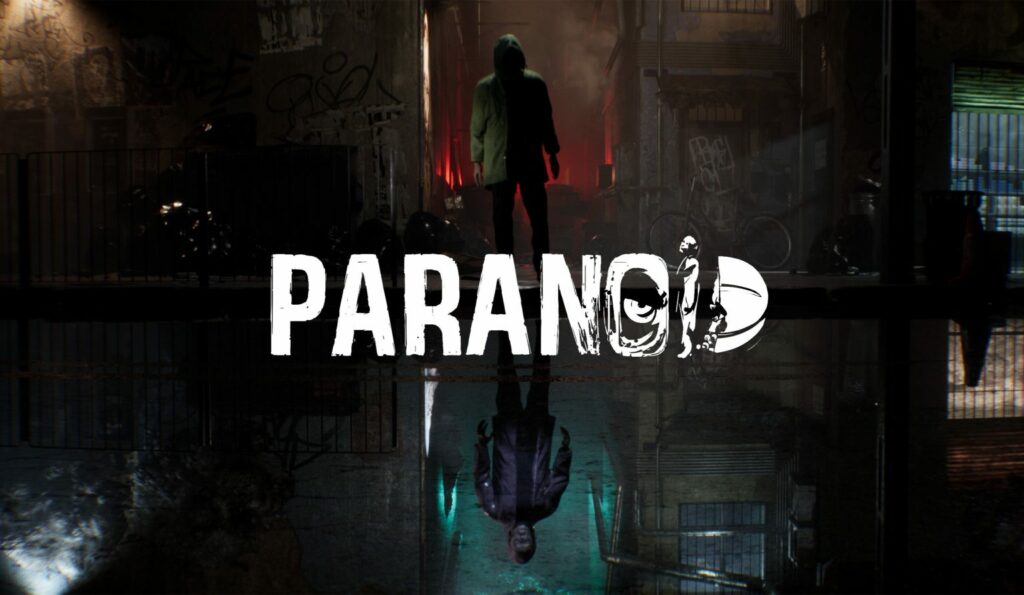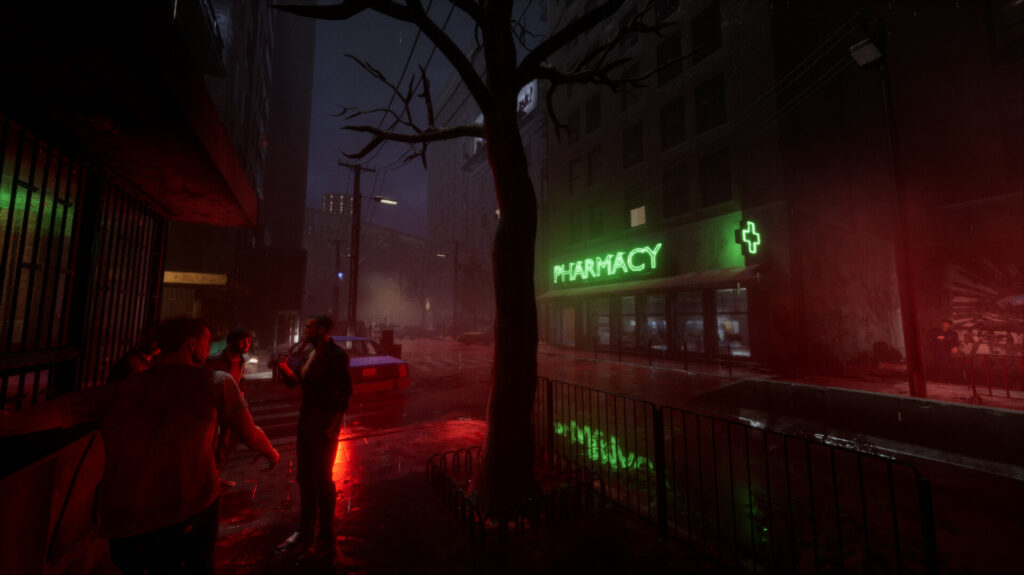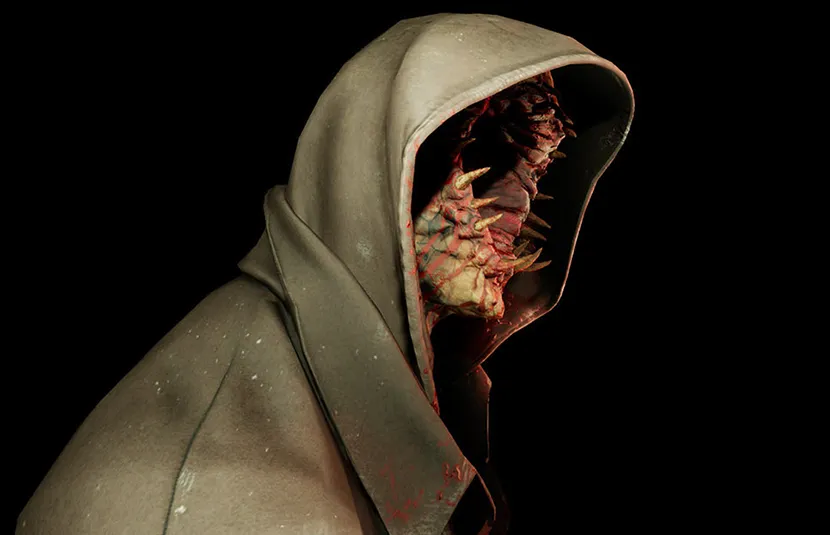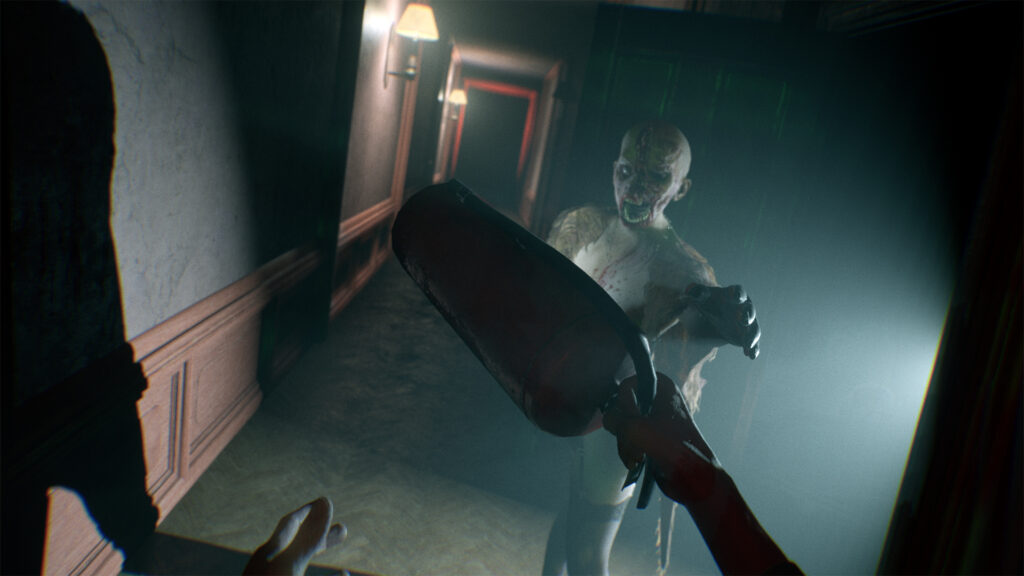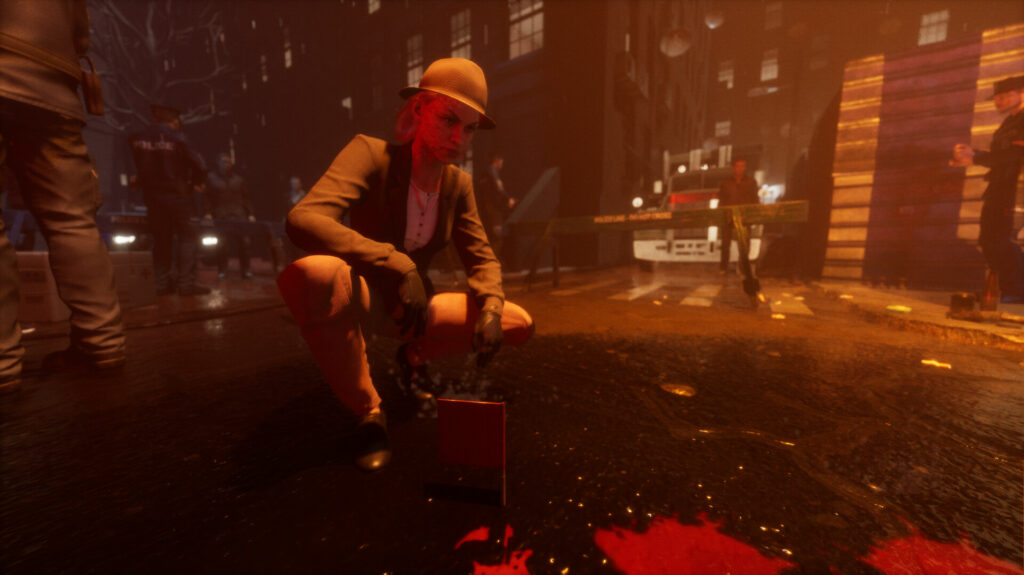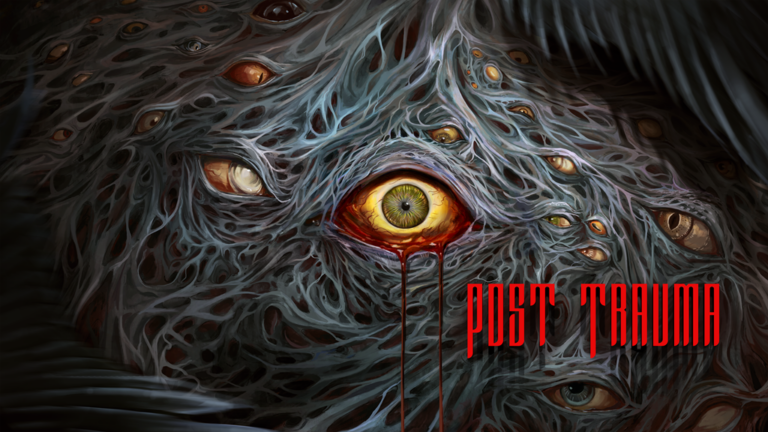I had eagerly awaited the release of Paranoid, the latest jaunt from the ever-controversial MadMind Studio, since the game was announced way back in 2018. As a clinician and horror enthusiast, the premise of a game featuring a main character described as having ‘paranoid schizophrenia’ (according to the game’s original Steam listing, now revised) immediately intrigued me.
My hope, albeit low, was for the game to approach the protagonist’s paranoia — depending on the diagnosis, paranoid personality disorder (PPD) affects 3.2% to 4.4% of the general population, while paranoid schizophrenia impacts just 1% —with nuance or even grace, rather than centering the horror solely around the character’s supposed mental illness. But who am I kidding? This is the same studio that brought us the nightmarish Agony and its baby-drinking spinoff, Succubus. Maybe I was delusional.
STORY
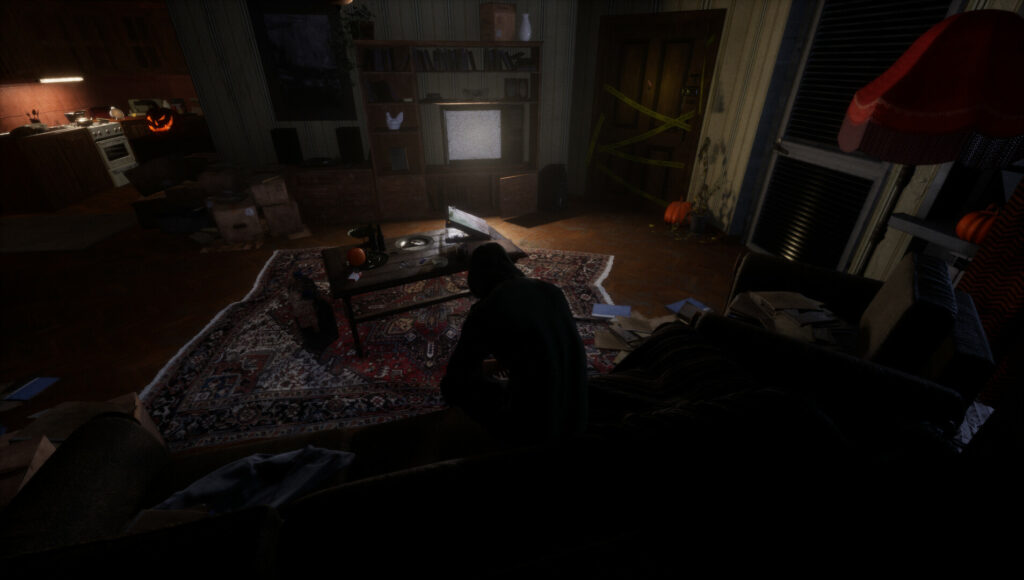 *Warning: Story Spoilers Ahead*
*Warning: Story Spoilers Ahead*
Paranoid casts you as Patrick Calman, a socially isolated man scarred by a family tragedy. One day, Patrick receives a call from his sister, who has been missing for over a decade, announcing her impending visit. What follows is a journey to uncover the truth in an attempt to save his sister and his sanity.
Full disclosure: At launch, this game was a buggy mess. When I tried playing it on my Steam Deck, I found myself in Patrick’s apartment, unclear on where I was or what to do. At first, I thought this was intentional; a game design that aims to instill confusion in the player. Nope.
It turns out many players experienced this — being dropped into the middle section of the game, clueless about what was happening or how to progress. Deleting game data and rebooting didn’t fix it, and when MadMind issued a patch, some players reported game crashes.
Missed Opportunities
Once I got my bearings, a few story elements intrigued me. For instance, Patrick’s ally, Detective Ortega, who aids him in the search for his sister. The notion of a psychotic protagonist collaborating with an investigator to discover the truth was an interesting narrative beat. It subtly subverts the notion of a helpless mentally ill individual, offering a more realistic representation of resilience.
However, some story elements remained unclear. There is a moment midway through the game when Patrick calls for his sister from his apartment balcony. The character seemed to reference something happening below, but no matter how much I turned the camera, I couldn’t determine what Patrick was screaming at.
The game offers two narrative paths with similar endings, with both linking Paranoid to MadMind’s previous title, Succubus. Yet, I found this narrative connection puzzling. Was Patrick’s sister kidnapped by a cult to summon the demon Ishtar from the previous game? Why is Patrick compelled to cut out people’s hearts and feed them to a faceless mouth demon? Is Patrick’s enigmatic father behind it all? Could Patrick’s voyeuristic neighbor secretly be a succubus? I have no idea because the story was plagued by bugs, literally, and poor game design, leading to my next point.
GAMEPLAY & DESIGN
Paranoid emphasizes puzzles and exploration to drive the story forward, which would have been enjoyable if not for near-constant distractions.
Exploration
Interacting with objects in Patrick’s apartment immerses players in his isolated world. Players can watch TV, listen to a recording from Patrick’s sister, spy on neighbors by removing wall panels, or crush cockroaches in Patrick’s fists. Despite seeming trivial, these elements offer a glimpse into the protagonist’s perspective on his own life.
However, I’m not particularly fond of portraying a mentally unsound central character as a pervert. The player can spend an exorbitant amount of time watching their aforementioned neighbor shower and, well… do other things.
Voyeurism aside, these, uh, “moments” alternate with sequences where Patrick is pulled into a delusional world, often culminating in acts of violence. While these elements contribute to the psychological horror theme, MadMind’s attempts often feel flat and uninspired. An exception is Patrick’s mailbox, which could use a lesson in consent.
Sound
The game’s audio design, however, is its most detrimental aspect, at times rendering Paranoid nearly unplayable. Players must constantly listen to an audio track, supposedly Patrick’s thoughts or him talking to himself. While this might have cleverly mirrored the actual experiences of individuals living with something called persecutory voices, it interferes with crucial story beats and gameplay instructions when not in cutscenes (an important note here: voice-hearers account for 8% of the population).
This is most jarring in Patrick’s apartment, where the player is required to explore the space to progress. Here, the clash between TV audio, his sister’s recordings, and Patrick’s inner voices creates a cacophony that’s enough to drive any player insane.
Madness
At various points, Patrick’s mental stability can deteriorate, evident in visual filters that blur the field of vision. To counter this, players collect and regularly take medications to prevent increasing hallucinations. Taking too many, however, results in vomiting during combat, leaving Patrick vulnerable to attack.
Did I mention that medications are different from health? Though an interesting design choice, many players, including myself, frequently took pills instead of health drinks by mistake, leading to frequent and annoying vomiting spells.
Enemies
Other design choices are noteworthy for their poor taste. While I found some of the enemies intriguing, like the bisected woman featured in early promotions, the player will largely experience the same enemy type over and over again. Oh, and these enemies are mostly homeless people that the player must beat to death to progress. Yup.
This is perhaps the most insensitive design choice in Paranoid. Homelessness and mental health often intersect, especially in the United States. In recent years, violence towards unhoused persons appears to be on the rise.
While Patrick will occasionally fight entities born of his own hallucinations, why the main character is attacking unhoused people is never clearly explained. This is to say nothing about the fact these NPCs are rendered as shouting conspiracy theories and humbling recollections of war, further conflating common enemies with unhoused combat veterans. Yikes!
COMBAT
Patrick employs various melee weapons in his quest to collect still-beating hearts for… reasons? Oh, yeah, to find his sister. Right.
These include pipes, hammers, axes, and even his bare fists. In these combat sequences, the player can see that Patrick’s hands are scarred from previous altercations. As players engage enemies, fresh wounds appear, two design choices I appreciate.
Executing well-timed moves results in brutal finishers, often requiring quick-time button-mashing, which is cumbersome and difficult to pull off. More often, combat feels random, with enemies slumping to the ground in a dissatisfying finish. This style became monotonous quickly; I found myself trying to avoid it, but the cramped environments often forced confrontations.
PUZZLES
Paranoid prioritizes puzzles, and this is where the game comes closest to shining. Through frequent backtracking, item gathering, and ingenuity, players piece together tiny mysteries to progress the story forward. Whatever the story actually is.
One puzzle in the sewers requires players to pay attention to the cockroaches crawling along the walls. At first, I was stumped, but was pleasantly surprised when I realized the trick was to listen to the bugs. Ironically. This moment stands out as one where originality peaks through the muck and mire of an otherwise dreadful gaming experience.
CONCLUSION
As I’ve written previously, I hold little forgiveness for game developers who propagate dangerous stereotypes about neurodiverse persons and those with lived experiences to tell lackluster stories. In this regard, Paranoid is everything I feared the game would be.
MadMind Studio, not afraid to push boundaries and be controversial, displays timidity in their latest title. Still, it’s evident that the developer prioritizes shock over substance, and relying heavily on Patrick’s mental illness to justify story beats and gameplay that lacks substance is a clear continuation of that prioritization.
But let’s face it, that’s not the kind of game MadMind makes. This is to say nothing of the buggy rollout and near unplayability of portions of the game. For these reasons, I suggest Paranoid be uplifted as an example of what not to do when designing a psychological horror title with psychosis as its thematic center.
 (2 / 10)
(2 / 10)
Bad
 (2 / 10)
(2 / 10)
 TheSvenBo
TheSvenBo